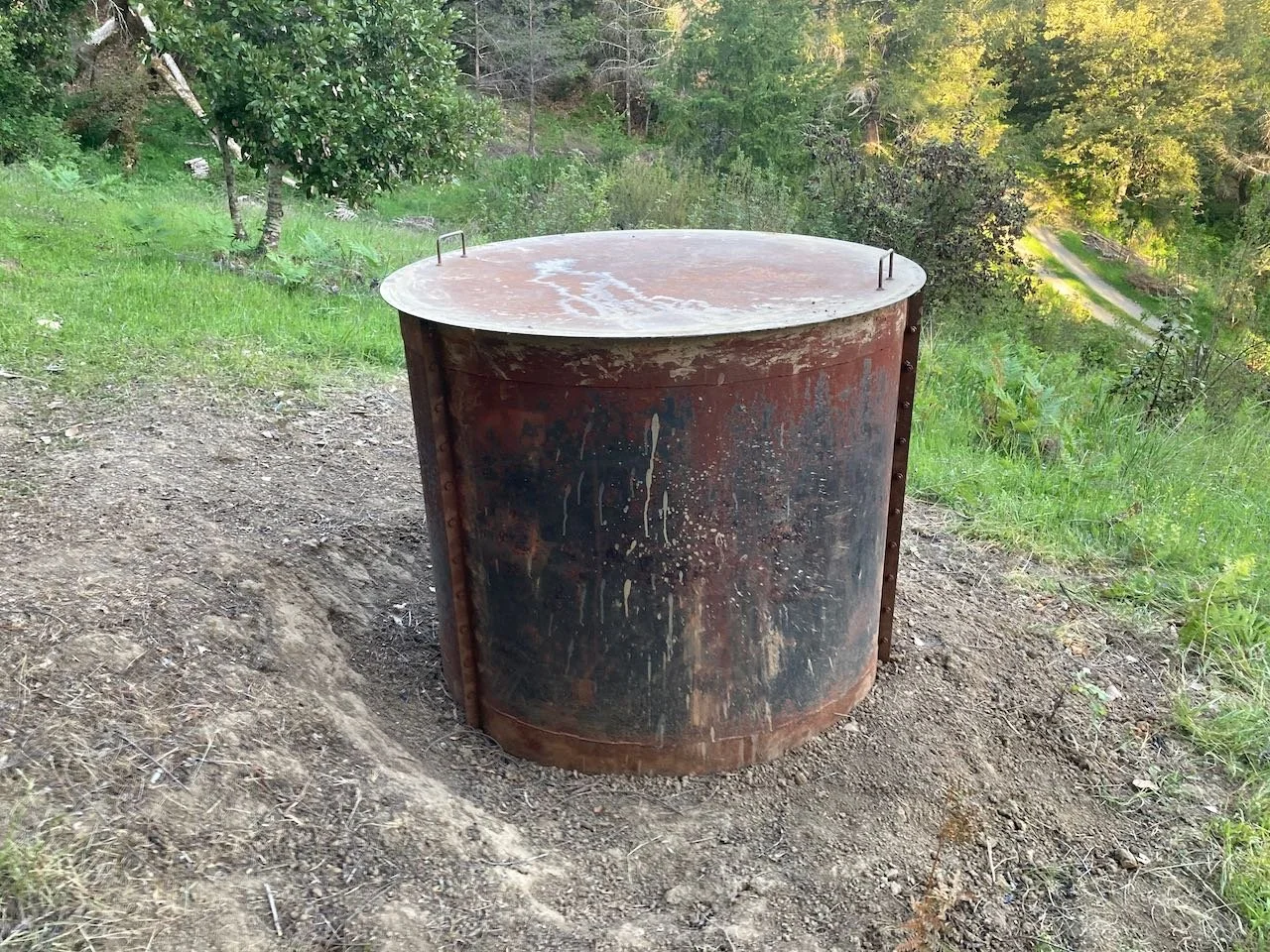In response to another member of the Biochar On Site community, I described my kiln vis à vis what most people use.
“Air quenching” means extinguishing by depriving a fire of air.
Ethan,
You might like to hear from an outlier to the water-quench majority. Among other benefits, "air quenching" obviates some of the necessary practices with water-quench kilns to meet the critical safety considerations of employing fire in a flammable landscape.
I use an air-quench flame cap kiln to make char on our steep forest land. It's impractical to supply water in most places here, and air quenching makes water unnecessary. The main drawback is having to wait, but I can afford to wait three days or more. A major benefit of this system is that the char is dead out when the kiln is opened. The char does not have to be spread out, which makes it easy to collect.
I've been using the same kiln for 10 years. Water warps hot metal much faster than just heating and cooling, so my kiln has only warped slightly in all that time. I mud the seams now to get a good seal, a few hours after installing the lid, when I can touch the kiln. But by not using water, it could last another 10.
Besides not requiring quench water, the other benefit is that I can operate the kiln myself. It has three stiff panels that ride on a wheelbarrow; the round lid simply rolls. (I hacked a powered hub onto my wheelbarrow to help.) It's only 4 feet in diameter, which requires less work to dig a pad for it in my steep landscape, compared to a Ring of Fire kiln. All flame cap kilns work better closer to level, by the way; the flame cap is broken when it climbs one side of the kiln.
The Ring of Fire is an excellent tool IMO, provided that you have water on site and at least two people; three is better. I would not recommend operating the Ring of Fire alone. But it’s hotter than my air quench kiln, which makes it faster, especially for material above 2" in diameter. (I harvest larger material as firewood or leave it behind.) Cooling with water warps the RoF’s panels, but it doesn't matter when you aren't depending on having an airtight seal at the end. However, warping does appear to age the Ring of Fire quickly (IDK), and it’s aesthetically unpleasing IMO. The slower consumption of my air-quench kiln is actually a benefit, because I'm loading it alone and I'm a senior.
I've worked on redesigning my air-quench kiln, but after consulting with one fabricator and commissioning a new design with another, I've settled on the original design. Being able to work alone without water, nimbly on steep land—no hoses, portable tanks, pumping, or drenching, and less prep time—works for me.
